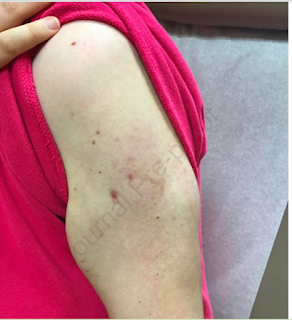T-cell lymphoma after COVID-19 vaccination
A previously healthy 28-year-old woman received the primary dose of adenovirus type 26 (Ad26) viral vector-based COVID-19 vaccine 35 (Janssen Pharmaceuticals, Johnson & Johnson vaccine). A few days later, she developed a swelling at the injection site. Over the next three months, the nodule progressively enlarged to become a plaque with associated pain, warmth, and tingling sensation. She also developed cervical and left axillary lymphadenopathy, intermittent fevers, fatigue, and unintentional weight loss. Presumptive treatment for cellulitis with several courses of oral antibiotics was ineffective.
According to the WHO-EORTC classification, the clinical and histopathologic findings were consistent with SPTCL - Subcutaneous panniculitis-like T-cell lymphoma, a rare type of lymphoma that mainly affects the skin. Lymphomas are cancers that result from a type of white blood cell that grows out of control. T-cell lymphoma begins in white blood cells called T cells (T lymphocytes) as the T cells develop abnormalities that make them attack the skin.
Three weeks after combination therapy, the anemia, leukopenia, and neutropenia resolved. By six weeks, the patient’s fatigue, the subcutaneous nodules, and the lymphadenopathy had nearly resolved.
Previously reappearance of a pre-existing neoplastic condition or lymphoproliferative disease post COVID-19 vaccination was described after Vaxzevria, Oxford/AstraZeneca vaccine in medical literature and popular magazines. Complete remission of cancers after vaccination was also described in medical literature.
REFERENCE
Kreher MA, Ahn J, Werbel T, Motaparthi K. Subcutaneous panniculitis-like T-cell lymphoma after COVID-19 vaccination. JAAD Case Reports. 2022 Aug 10.




Comments
Post a Comment